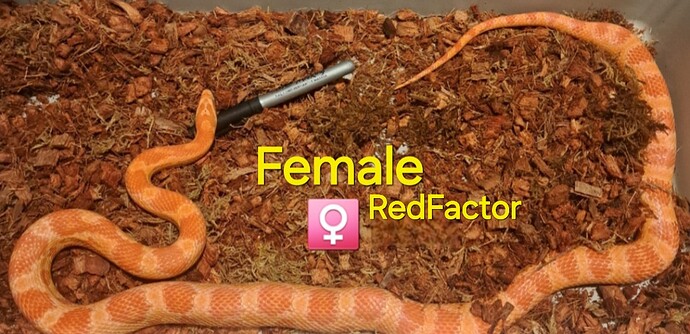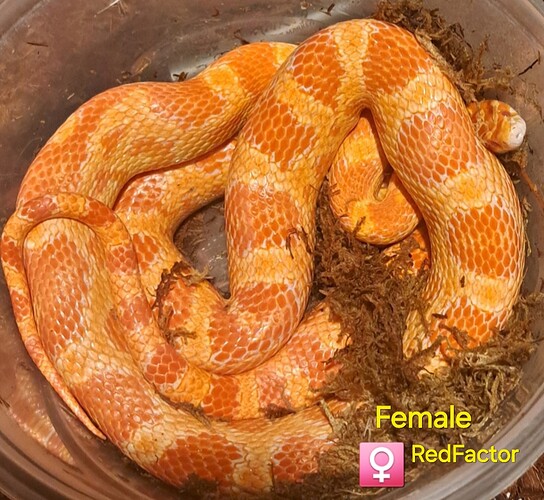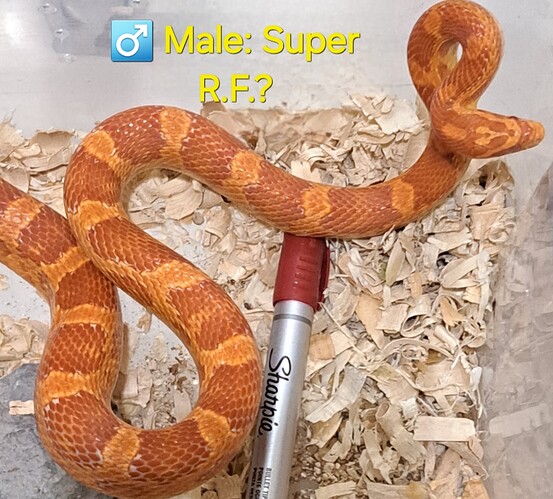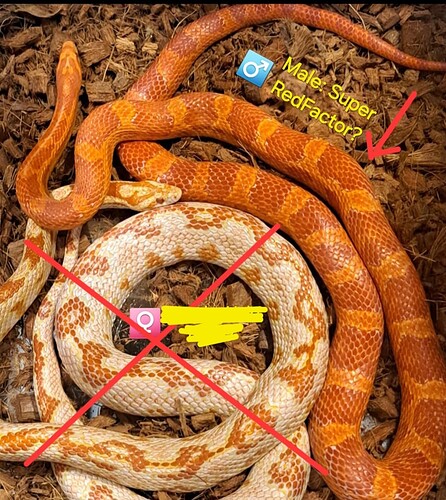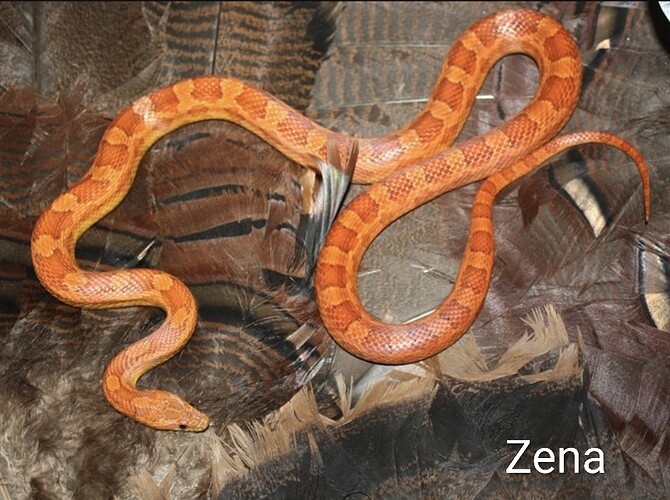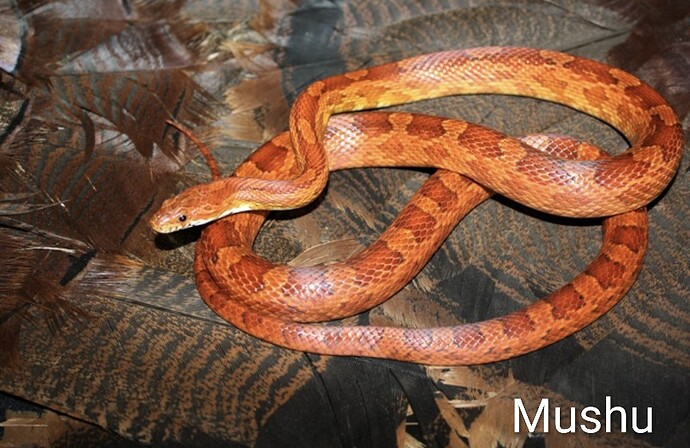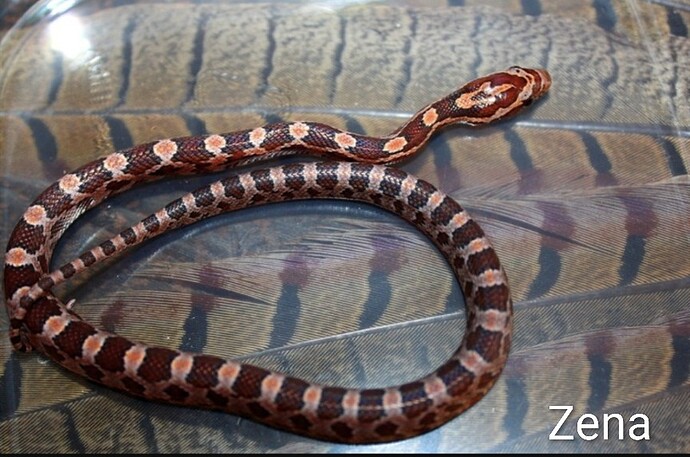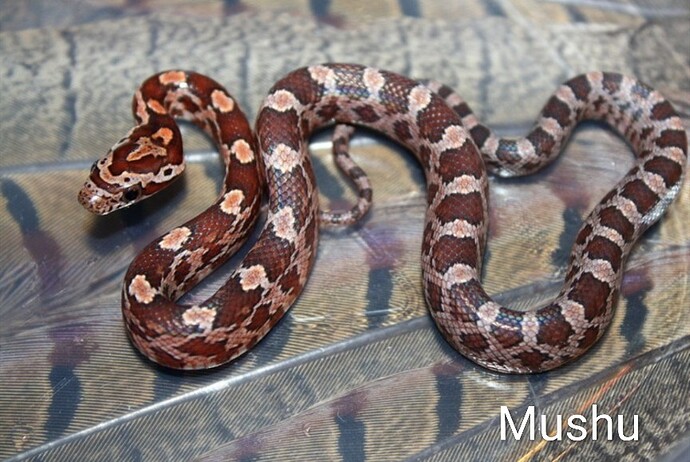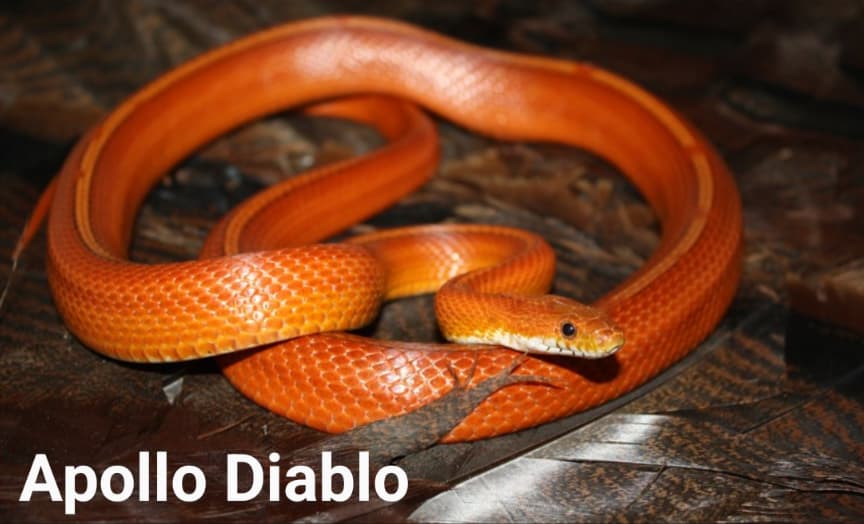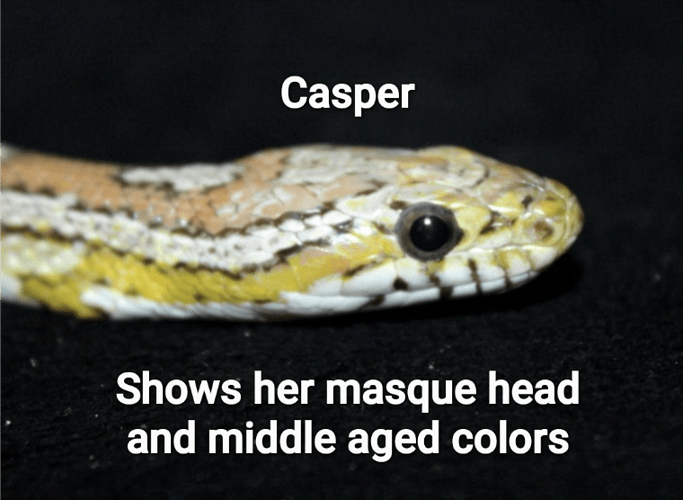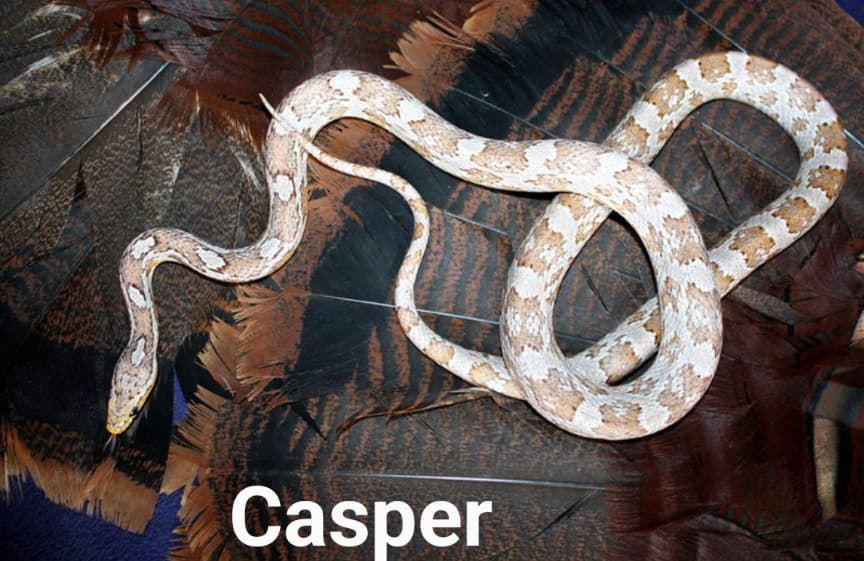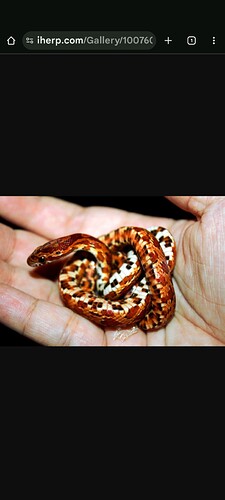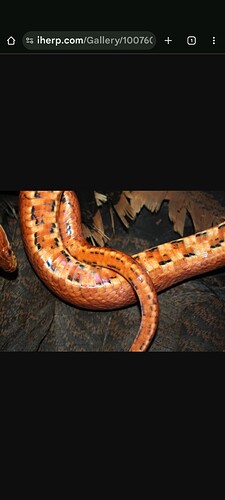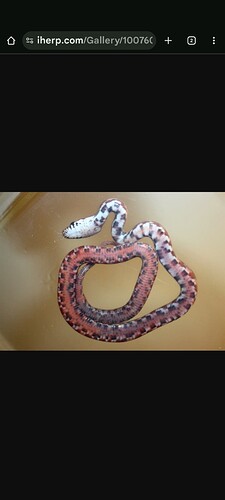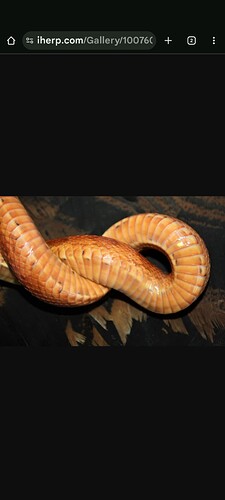Bought this 1.1 pair (siblings) 4 years ago, both as being “Amel RedFactor het Anery/Scaleless”. Never put much thought into the obvious dissimilar colors until recently. The female is lighter and kind of orange, the male is dark red. Can anyone with knowledge and experience with red factor in amels give opinions about the male possibly being Super RF? From my limited knowledge it looks like the male is Super, but what do i know? Opinions welcome, thanks. (Both females in the photos are currently with eggs)
Red factor often shows more strongly in males. So it could be just that. And welcome to the forum!
Welcome! They are all very pretty. Unfortunately, it’s not really possibly to visually ID a Super RF Amel with 100% accuracy. It may be possible to say that an animal is likely a Super, but the only way to truly confirm a Super (for any of the incompletely dominant traits) is to breed a likely Super to a marmte who doesn’t have the trait. If it’s a Super, all the offspring will show the trait.
If parentage is known to be two Supers, of course the babies are all Supers and don’t need a breeding trial to prove it.
@solarserpents is right, males usually show RF more noticeably than do females. There’s also just individual variation.
Welcome! Besides what you’ve already been told, it looks like the female is from Candy Cane (red pattern on white ground) lines, so I’d expect the much higher contrast you see compared to a non-CC. ![]()
Thanks to all of you. He has actually been with the yellowish female in the last photo with the aberrant pattern visually confirmed 4 times already over the past 25 days. Shes unrelated and not obviously not RF, so we’ll see what happens!
Thanks again
I really wanted to see your babies from that potential super male pairing. How are they doing?
I have something similar going on with normal siblings here. Pretty sure the male is super and the female is not. They’re both normals though they do look hypoish. I bred them though and I’m positive of them being normal red factors.
EDIT: I meant to say I’m positive they’re normals, but suspect red factors. I’ve mentioned in the other thread that I have not tested them to a known red factor carrier or one not carrying it at all to make sure. Just making sure this is known. I advertise them as normals suspecting red factor.
Couple of questions for you. How old are they in the more recent images? Do you have pics in natural light? Do you have pics of their bellies? You said that you bred them. What was the pairing? Do you have parents’ pics?
They do have very thin borders, hypo-style as you said.
These are both full siblings. I’ve actually shown these in a few threads now. Mostly in that Aberrant Aztec thread I opened up discussion for. The black checkers on their bellies when they were babies shows they are normals. Both normals hatched 2015 adult photos taken in 2020.
Sire is a striped tessera het. pied bloodred, anery and hypo. Shown here.
Dam is a ghost with questionable lineage. Showing an old head shot to prove the color she used to have and a current photo.
Here’s the male Mushu baby belly versus now. Don’t mind me just taking screenshots from the IHerp account. Mushu’s entire belly up to his head is red orange.
Zena has clear belly scales (I believe she’s het pied) up to her neck where the white starts to actually show. She’s orange all the way up the belly though.
Sorry they’re not full body belly shots. It’s hard to hold in one hand and photograph with the other. I should find a clear bin and get those shots in one day. As for natural light if it’s warm enough outside I’ll bring them out. These were taken under typical white compact fluorescent light.
